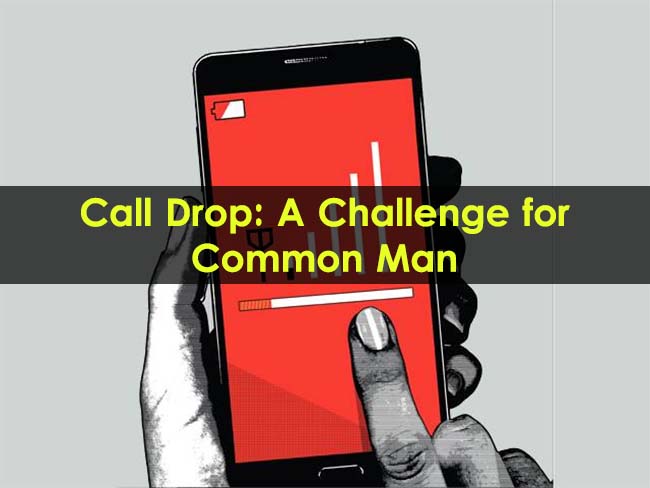With the increase in digitalization of India, the internet is replacing physical efforts and saving time. Mobile phones have connected every person with the world, but some problems have been reported in them in past few months. With the matter of net neutrality has turned down, the issue of call drops has arrived in India.
What is call drop?
A call drop is a situation of disconnection of call before caller ends the call mostly on wireless networks. This has become a common thing these days and it has been in the news from last few months. Many users have complained about it and has created problems to the callers and frequent call crops have become a headache for telecom service providers.
Expected causes
Lack of Towers – The digitalization has become a need of every person and technology has brought mobiles in every hand. A high number of users and limited towers, creating the problem more critical. Records says that we currently have half of the number of the tower we need for proper connectivity. Sharing tower can resolve the problem, but companies don’t feel reluctant in sharing their towers
The burden of Subscribers – As the customers or subscribers are increasing in a fast manner, service providers are having a problem in managing them. These days every person have a phone having dual SIM feature increasing the number to two per person.
Lack of Spectrum – Mobile phones use the radio waves ranging between 300 – 3000 Hz. Lower the range better will be the transmission. India has three frequencies for GSM, 900, 1800 and 2100 Hz. 900 and 1800 are used for 2G and 2100 is used for 3G. with the increase in 2G and introduction of affordable 3G plans, the spectrum bands finds it hard to serve the mammoth population.
Company’s Role
Well, the company gets benefits from call drops if the billing happens on per minute. But if per second billing is done, tele companies gains nothing from call drop. As the call drop is required in measuring the performance of a company, call drop is a matter of concern for them.
Government’s Role
The government is required to increase the bands which is used mostly like 900 and 1800 Hz bands. Better management of spectrum and Offering more bands can reduce call drops to a large extent. The lower bands are provided for defense services for better transmission. Opening some of those bands for tele companies can show some positive effect. As towering regulations are under the state government, so the state must pay attention over it and regulate in a uniform pattern. Along with that, erecting towers over government buildings will offer better service to people and overcome the problem. As call drop shows he performance of companies so making it more crucial for people to choose their service provider over call drop records can make companies think over the problem.
As the tele-density is increasing in India, with Delhi crossing 220 marks, India is heading to a nation with a huge number of mobile users and can make other foreign companies invest in India. But call drop is a major problem and this has resulted from many people to use internet calling as a better option of communication then normal calls which can again revive the issue of net neutrality in future.





